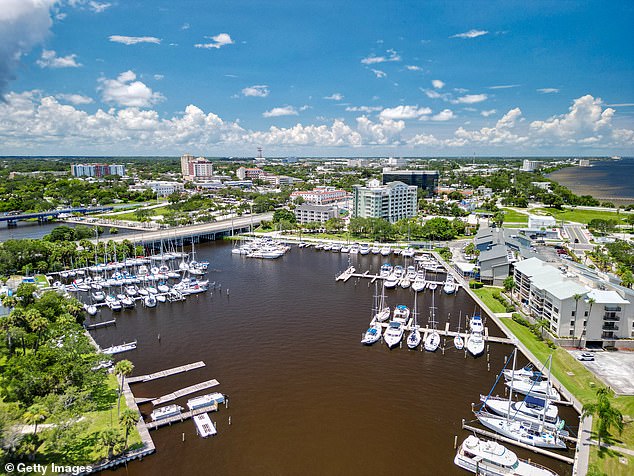Soaring housing prices are expected to fall in several metropolitan areas in the southern United States.
The cost of real estate continues to slowly rise in states like New York and Connecticut. However, a new report from financial analysis firm CoreLogic indicates that several metropolitan areas, primarily in the South, are likely to see a decline.
Despite skyrocketing home prices in cities like Miami and West Palm Beach, two metropolitan areas in the Sunshine State are expected to see a decline: the Palm Bay-Melbourne-Titusville region and the Deltona-Daytona region Beach-Ormond Beach.
In each city, CoreLogic analysts predict more than a 70 percent chance of a price drop by spring 2025, classifying the risk level as “very high.”
This also applies to other metropolitan areas. Just across the border, the Atlanta-Sandy Springs-Roswell region of Georgia is expected to see a drop, as well as the Greenville-Anderson-Mauldin metro in nearby South Carolina.
Five US metropolitan areas, including the Palm Bay-Melbourne-Titusville region in Florida, are projected to experience a decline in home prices by spring 2025 (pictured: the city of Melbourne, Florida).

Four of those regions are located in the South, including the Greenville-Anderson-Maudlin metro in South Carolina (pictured: the city of Greenville).
These changes in course are not limited to the South either; On the opposite coast, Spokane and Washington’s greater Spokane Valley should see price declines.
Nationally, CoreLogic analysts expect year-over-year home price growth to slow somewhat through 2025.
High interest rates have taken an undeniable toll on the real estate market and a report The National Association of Realtors found that sales across the United States fell 1.9 percent year over year since April.
The median sales price in April was $407,600, an increase of 5.65 percent year over year and a 3.58 percent increase from the previous month.
The South lagged slightly behind these trends, as median home prices rose to $366,200, up 3.7 from 2023.
The current housing shortage, which some analysts have called a “crisis,” poses another problem for potential home buyers.
This low inventory is compounded by factors including the lingering effects of the Great Recession, as well as skyrocketing mortgage rates, which reached their highest point in more than two decades late last year.

Georgia’s Atlanta-Sandy Springs-Roswell metro area is among those with a 70 percent chance of seeing a decline in home prices next year (pictured: City of Atlanta)

The trend is not limited to the south either; Washington’s Spokane Valley (pictured) is also included in the predictions.
The broad rebound in home prices presented a challenge for homebuyers during what is historically the busiest time of year. More than a third of all homes sold in a given year are purchased between March and June.
The National Association of Realtors’ pending home sales index fell 7.7 percent in April from the previous month, the first drop since January.
“The impact of rising interest rates throughout April dampened home buying, even with more inventory on the market,” said Lawrence Yun, the group’s chief economist.
However, Yun continued, “the Fed’s planned rate cut later this year should lead to better conditions, with greater affordability and more supply.”
Despite rising home prices and mortgage rates, hopeful first-time buyers appear to be optimistic about the 2024 market.
Nearly three in four Americans planning to buy their first home have faith in the housing market and their personal finances, according to TD Bank’s First-Time Homebuyer Pulse survey.


